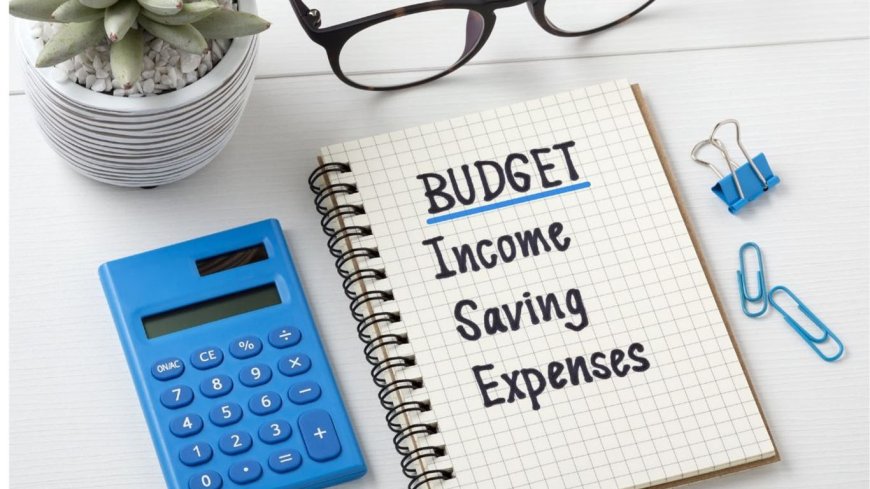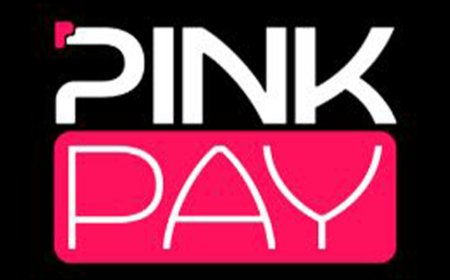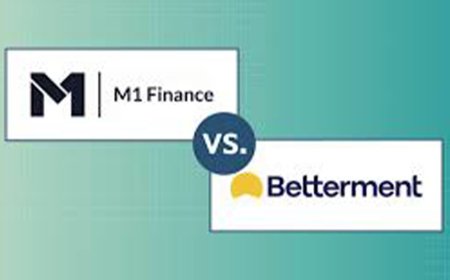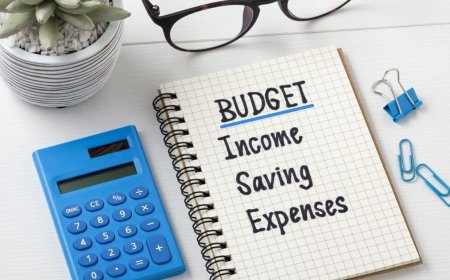7 Proven Budgeting Tips to Create a Financial Plan for Any Income in 2025
Learn how to create a budget that fits your income and goals with practical tips. The 50/30/20 rule, real-life examples and many others. Start budgeting for financial success today.

Crafting a budget tailored to your financial circumstances is the foundation of achieving both short-term and long-term financial success. Whether you're saving for a dream vacation, building an emergency fund, or planning for retirement, a well-structured budget helps you take control of your money. Budgeting styles vary, but the key is finding a system that matches your income, priorities, and lifestyle. In this guide, we’ll share actionable budgeting tips, proven strategies, and real-world examples to help you design a personal finance plan that works for any income level.
Step 1: Evaluate Your Income and Spending
The first step in creating a budget is understanding your financial picture. Calculate your total monthly income, including your salary, freelance earnings, side hustles, or passive income streams like rental properties or investments. Then, categorize your expenses into two main types:
- Fixed Expenses: These are consistent costs, such as rent or mortgage payments, utility bills, insurance premiums, and loan repayments.
- Variable Expenses: These fluctuate monthly, including groceries, gas, entertainment, and dining out.
Budgeting Tip: Use personal finance apps like Mint, You Need A Budget (YNAB), or PocketGuard to track your spending automatically. Reviewing your bank and credit card statements for the past 1–3 months can also reveal spending patterns.
By knowing exactly how much money comes in and goes out, you’ll have a clear starting point for building your budget.
Step 2: Select a Budgeting Framework
There is no universal budgeting method, so choose one that aligns with your financial goals and lifestyle. Below are two popular approaches to get you started:
The 50/30/20 Budgeting Rule
This simple beginner-friendly method divides your after-tax income into three categories:
- 50% for Needs: Covers essentials like housing, utilities, groceries, transportation, and minimum debt payments.
- 30% for Wants: Includes non-essential expenses like dining out, streaming subscriptions, gym memberships, and hobbies.
- 20% for Savings and Debt: Allocates funds to building an emergency fund, contributing to retirement accounts, or paying off debt beyond the minimum.
Example: If your monthly take-home pay is $4,000:
- $2,000 goes to necessities.
- $1,200 is for discretionary spending.
- $800 is for savings or extra debt payments.
This method is ideal for those seeking a balanced approach to personal finance without overcomplicating their budget.
Customized Percentage-Based Budget
For greater flexibility, you can create a custom budget by assigning percentages to categories based on your priorities. Here’s an example inspired by a real-world case:
- 15% for Housing: Rent or mortgage payments.
- 10% for Food: Groceries and occasional dining out.
- 25% for Savings: Emergency fund, vacation fund, or other short-term goals.
- 50% for Investments: Retirement accounts, stocks, or other long-term wealth-building strategies.
This approach works well if you have specific financial goals, such as aggressive saving or investing, and want a budget tailored to your unique needs.
Step 3: Prioritize Your Happiness and Well-Being
A budget isn’t just about numbers, it’s about creating a life you love while staying financially responsible. To make your budget sustainable, allocate funds for activities and experiences that bring you joy.
- Invest in Self-Care: Set aside money for mental health resources, fitness classes, or hobbies like painting or hiking.
- Social Connections: Budget for coffee dates, movie nights, or trips with friends and family to nurture relationships.
- Personal Growth: Consider investing in online courses, books, or workshops to develop new skills.
A budget that feels too restrictive can lead to burnout, so strike a balance between financial discipline and personal fulfillment.
Step 4: Establish an Emergency Fund
Financial security starts with an emergency fund to cover unexpected expenses, like medical bills or car repairs. Aim to save 3–6 months’ worth of living expenses in a high-yield savings account for easy access and interest growth.
Tips for Building Your Emergency Fund:
- Automate monthly transfers to your savings account to ensure consistency.
- Use windfalls, such as tax refunds, work bonuses, or gifts, to boost your fund.
- Start small—even $25 per month adds up over time.
An emergency fund provides peace of mind and prevents you from relying on credit cards or loans during tough times. This post could help show you how to save $500 fast to achieve building your emergency fund.
Step 5: Plan for Long-Term Wealth
No matter your income, prioritizing retirement savings is essential for future financial freedom. Aim to save 15–20% of your income for retirement, using accounts like:
- 401(k): Contribute at least enough to maximize your employer’s contribution if available.
- Roth IRA: A great option for tax-free growth, ideal for younger earners or those expecting higher taxes in retirement.
- Other Investments: Explore low-cost index funds or ETFs for diversified wealth-building.
Starting early allows your investments to grow through compounding, so even small contributions in your 20s or 30s can make a significant difference by retirement age.
Step 6: Adapt Your Budget Over Time
Your budget should evolve with your life. Regularly review and adjust your financial plan to reflect changes in income, expenses, or goals. Reassess your budget when:
- Income Changes: A raise, job loss, or new side hustle.
- Debt Status Shifts: Taking on new debt (e.g., a mortgage) or paying off existing debt.
- Major Life Events: Marriage, having children, or relocating.
Schedule a budget check-in every 3-6 months to ensure it remains aligned with your priorities. You can check out my 5 biggest money mistakes and learn from them.
Step 7: Commit to Consistency
Staying consistent is the key to budgeting success. Track your spending weekly or monthly, celebrate milestones (like paying off a credit card), and keep your financial goals in focus to maintain motivation.
Strategies for Consistency:
- Cash Envelope System: Use cash for categories like groceries or entertainment to curb overspending.
- Automate Finances: Set up automatic bill payments and savings transfers to reduce manual effort.
- Avoid Lifestyle Creep: As your income grows, resist the urge to inflate your spending. Instead use extra funds to accelerate savings or investments.
Bonus Budgeting Tips for Success
- Leverage Budgeting Apps: Tools like Mint or YNAB simplify expense tracking and goal setting.
- Set Short-Term Goals: Aim for achievable targets, like saving $1,000 for an emergency fund, to build momentum.
- Reward Progress: Treat yourself to small rewards for hitting budgeting milestones to stay motivated.
Frequently Asked Questions (FAQs)
What is a budget and why is it important?
A budget is a financial roadmap for managing income and expenses. It’s essential for controlling spending, saving for goals, and preparing for emergencies.
What is the 50/30/20 budgeting rule?
This rule divides your income into 50% for necessities, 30% for wants, and 20% for savings/debt repayment, offering a simple framework for financial balance.
How do I start budgeting?
Track your income and expenses for 30 days, categorize spending, set goals, and allocate funds to needs, wants, and savings.
How do I budget with irregular income?
Average your income over the past 6–12 months, prioritize essentials, and build a larger emergency fund to cushion low-earning months.
How can I stick to a budget?
Use apps to monitor spending, set realistic goals, and review your budget regularly. Give yourself small rewards for consistency.
How much should I save monthly?
Aim for 20% of your income, but start with what is feasible and increase savings over time.
What are common budgeting mistakes?
Underestimating expenses, ignoring irregular costs, setting unattainable goals, and skipping reviews are pitfalls to avoid.
How do I balance saving and enjoying life?
Allocate funds for hobbies and social activities to make budgeting sustainable while saving for the future.
Should I pay off debt or save first?
Focus on high-interest debt while saving a small emergency fund to avoid new debt during emergencies.
What tools help manage a budget?
Apps like Mint, YNAB, or Google Sheets are excellent for tracking and organizing your finances.
Final Thoughts
Budgeting is a personal journey, what works for one person may not suit another. Whether you adopt the 50/30/20 rule, customize percentages, or design a unique system, the goal is to create a sustainable plan that supports your financial dreams. Start small, track your progress, and adjust as needed. Budgeting isn’t about deprivation- it’s about empowering yourself to build the life you want.

What's Your Reaction?

































